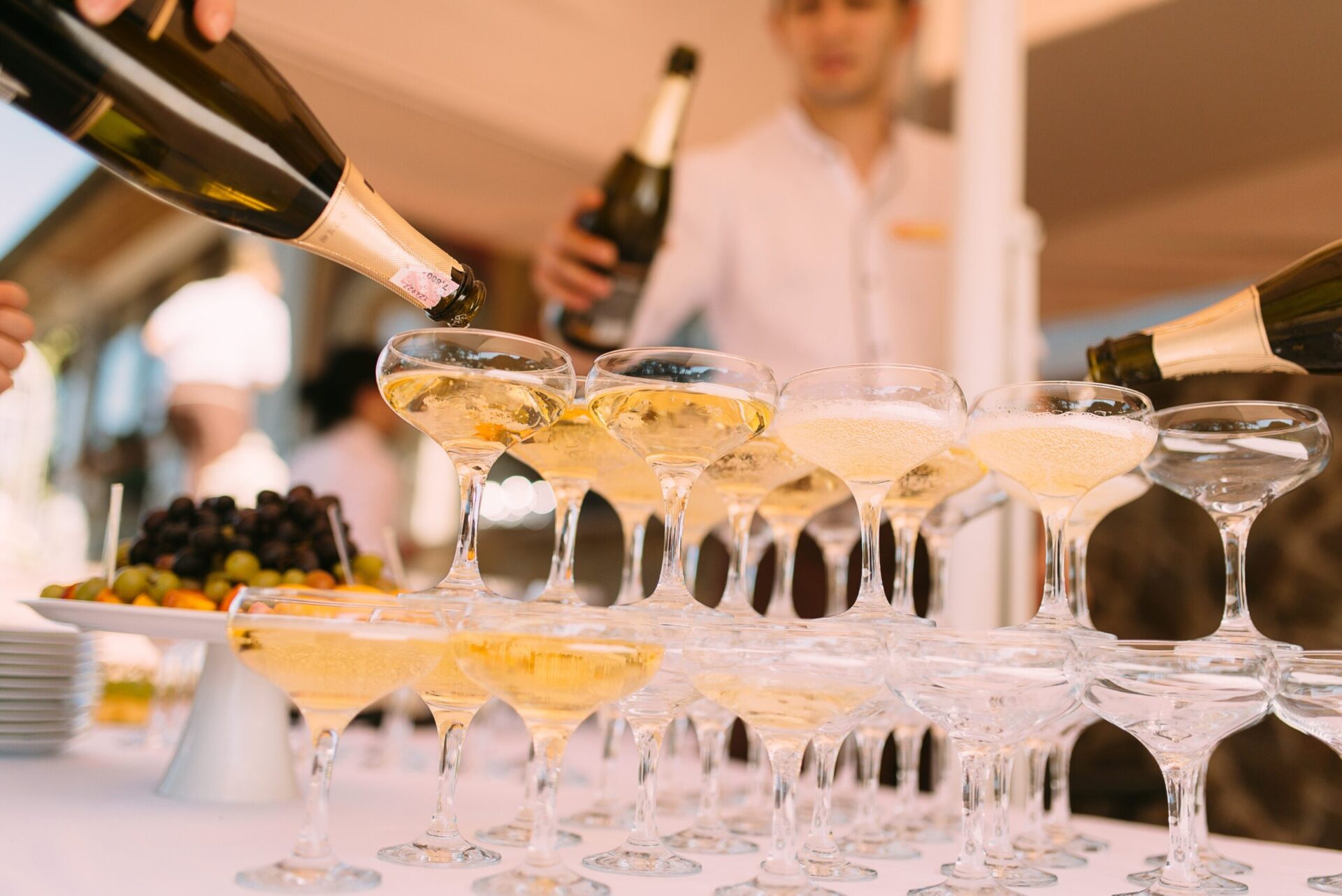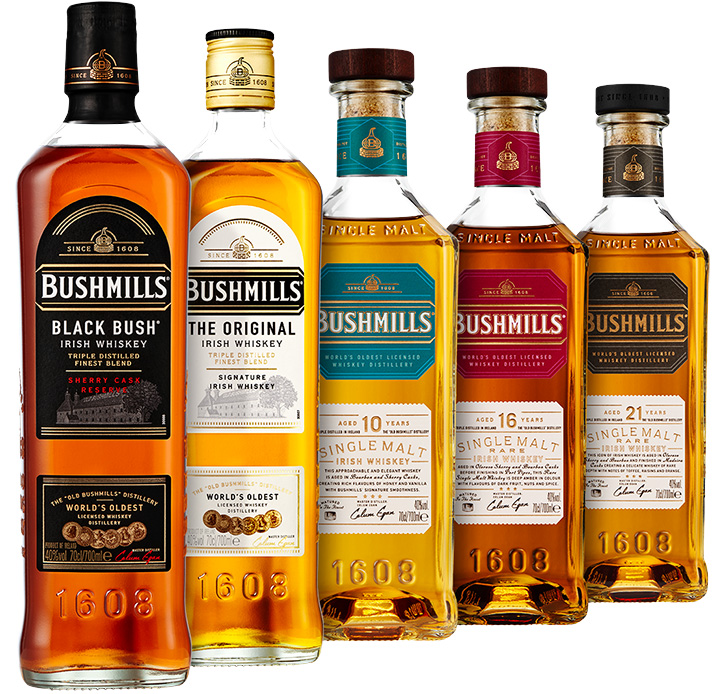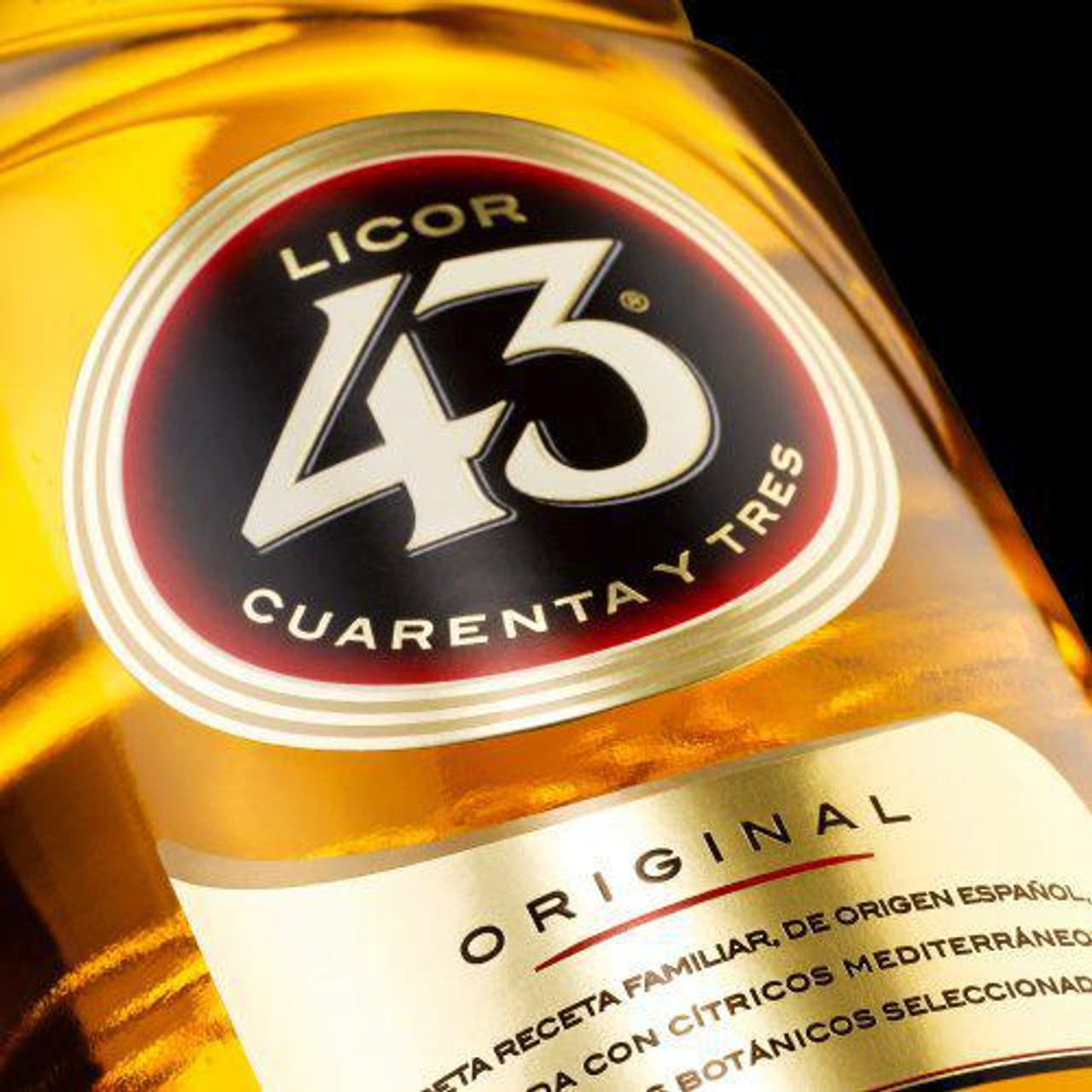Know the facts, champ(agne)
Whether you drink it on special occasions such as a birthday or to toast the New Year, champagne is always a good addition. But what do you really know about this drink? It is an ancient beverage that people drank even before the Middle Ages! Also, only a few grape types may be used in the production of champagne. Find out all about it in this blog!
The origin of champagne
Even before the Middle Ages, still wines from the Champagne region were known. It were the Romans who planted the first vineyards in the French region. In the 5th century, the region was carefully cultivated. In contrary to legend and popular belief, Dom Pérignon did not invent sparkling wine. Nevertheless, he made an important contribution to the production and quality of both still and sparkling champagne wines. The oldest recorded sparkling wine is “Blanquette de Limoux,” invented by Benedictine monks at the abbey near Carcassonne in 1531. The wine was bottled before the primary fermentation was finished.
More than a century later and six years before Dom Pérignon set foot in the abbey of Hautvillers, the English scientist and physician Christopher Merret documented the addition of sugar to a finished wine to create a second fermentation.
In France, the first sparkling champagne was made by accident; because of the pressure in the bottle, it was called “the devil’s wine.” The reason for this? The bottles of champagne exploded, or the cork popped. In 1844, Adolphe Jacquesson de muselet figured that the popping corks could be prevented. Even when deliberately produced as a sparkling wine, champagne was long made according to the méthode rurale whereby the wine was bottled before the first fermentation was finished.
An exponential growth in champagne production was seen in the 19th century. Production grew from 300,000 bottles a year in 1800 to 20 million bottles in 1850.
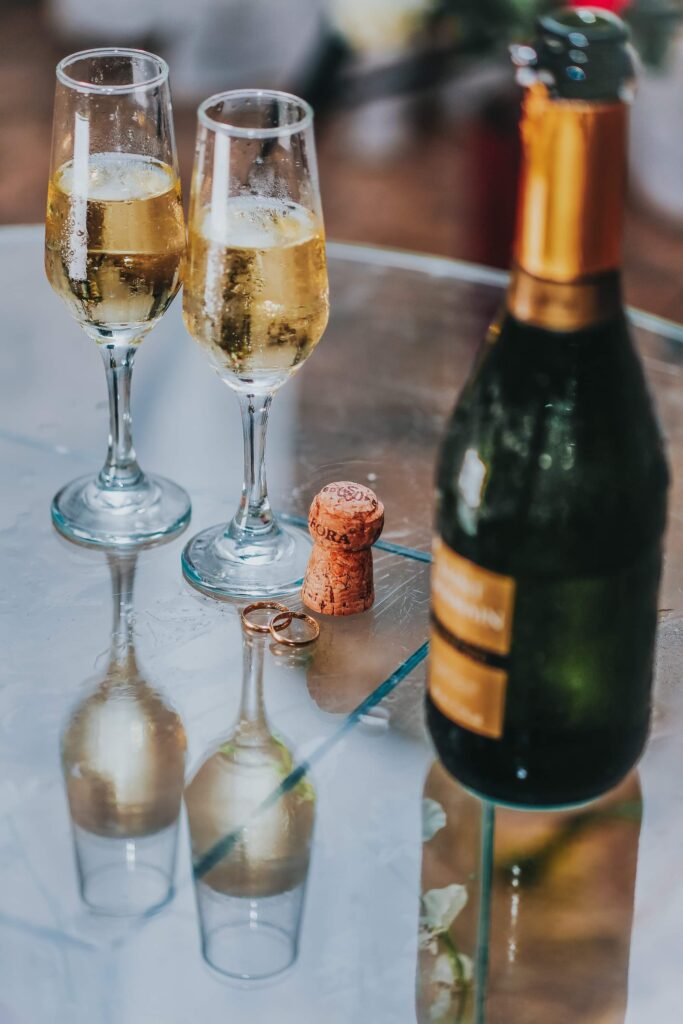
How is champagne made?
You may have already known that champagne must come from the Champagne region in France. But what else do you know about how champagne is made?
The traditional method by which champagne is made has many different names. Indeed, Méthode Traditionnelle was formerly known as Méthode Champenoise, but it can also be called Méthode Classique. Although every brand has its own production method, every champagne producer implements a second fermentation that takes place in the bottle after the primary fermentation and the bottling of the first substance. This is realized adding rock sugar and yeast to the bottle to induce the second fermentation.
After the forementioned steps, the champagne must age for at least 3 years. During this time, the champagne bottle is sealed with a crown cap similar to that of beer bottles. After aging, the bottle is manipulated, either manually or mechanically, in a process called remuage, so that the lees settle in the neck of the bottle. Then “disgorgement” takes place, which means that the neck will be freezed and the cap will be removed. The bottle is then quickly corked to keep the carbon dioxide in solution.
What types of grapes can you use?
As a general rule, the grapes used must be the white Chardonnay, or the “red wine grapes” Pinot noir or Pinot Meunier with dark skins. Most champagnes, including rosé wines, are made from a blend of all three grapes, although blanc de blancs champagnes are made from 100% Chardonnay. Blanc de noirs champagnes are made from Pinot noir, Pinot Meunier or a blend of the two. The dark Pinot noir and Pinot Meunier give the wine its length and backbone.
Different types of champagne
There are many different types of champagnes. Therefore, choosing the perfect champagne is often very difficult. Did you know that only sparkling wines from the Champagne region can be called champagne? Many people think that cava and prosecco are also a type of champagne, but they are not! These are called sparkling wines.
Different champagnes based on sugar content
The sugar content in champagne is an important part of the taste. We explain the different types of champagnes by sugar content, as described below:
BRUT CHAMPAGNE
Most of the champagnes are brut champagne. These are champagnes with 6 to 15 grams of sugar per liter. Brut is a very dry champagne.
DEMI-SEC CHAMPAGNE
Demi-sec champagnes contain about 33 to 50 grams of sugar per liter. These champagnes have a sweet taste.
EXTRA BRUT CHAMPAGNE
These champagnes contain 0 to 6 grams of sugar per liter. As the word ‘extra’ suggests, this is even drier than normal Brut Champagne. This is the driest champagne available.
SEC CHAMPAGNE
Sec Champagne contains 17 to 35 grams of sugar per liter. This champagne tastes slightly sweet because of this.
DOUX CHAMPAGNE
The doux champagne contains more than 50 grams of sugar per liter. This is even sweeter than the sec champagne. However, this type of champagne is barely available these days.
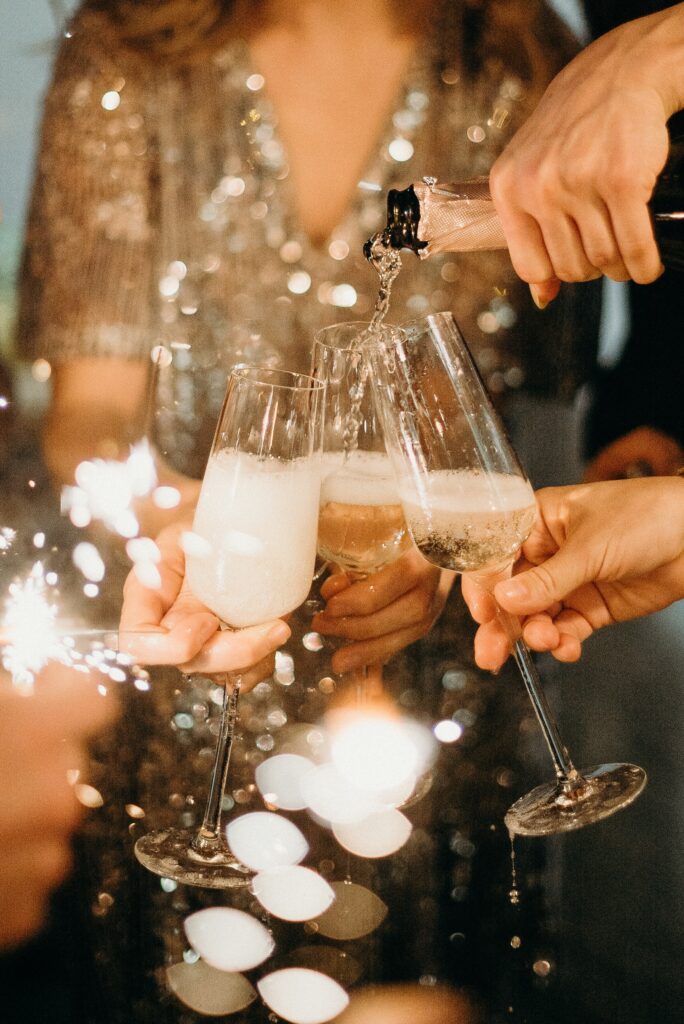
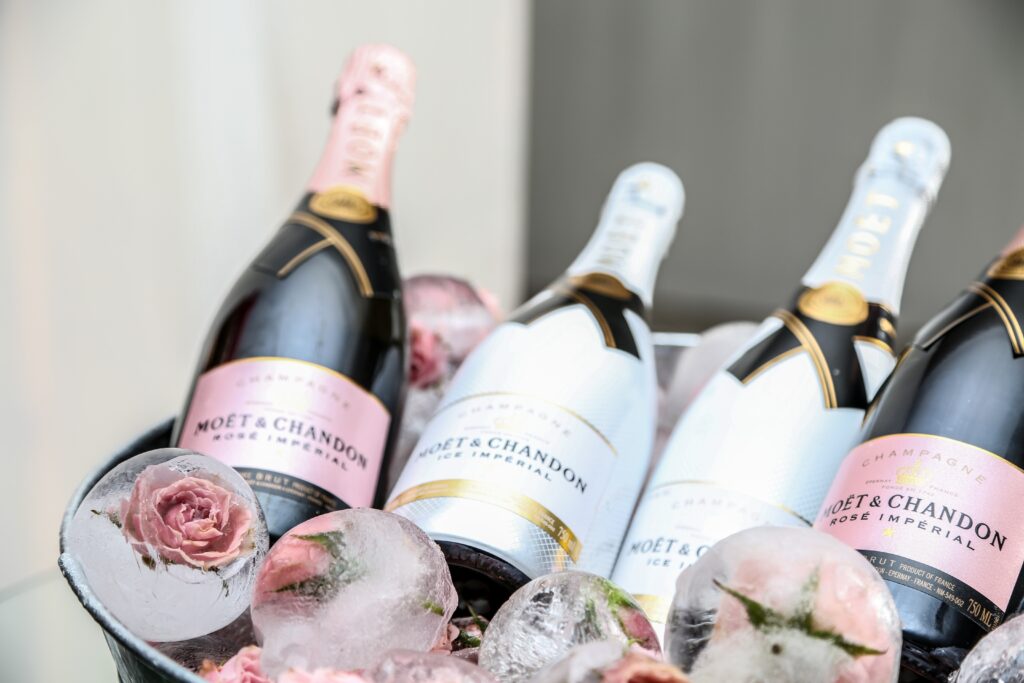
Different champagnes based on the grape
We already told something about the grapes that may be used. If we look at grape types, three champagnes can be distinguished:
BLANC DE BLANCS
This champagne contains white grapes. These champagnes are made from 100% chardonnay grapes. They have a high acidity in the taste and notes of citrus and apple can be found.
BLANC DES NOIRS
These champagnes are made from blue grapes: Pinot Noir, Pinot Meunier or both. These champagnes are rich and full-bodied with lots of dark fruits.
ROSÉ CHAMPAGNE
For rosé champagne, white and red wine are blended. 8 to 20% red wine is added to the champagne to give it a pink color. These are often fruity.
Different champagnes based on age
Finally, you can also differentiate based on the age of the champagne.
CHAMPAGNE SANS MILLÉSIME
These are champagnes without vintage. These champagnes mature for about 15 months in the cellars, making them the simplest and most common type of champagne. They are very consistent and therefore will always be of high quality.
CHAMPAGNE MILLÉSIME
These are champagnes with a year and from a specific vintage. These champagnes vary from year to year in terms of character. Generally, this champagne is kept in the cellars for at least 3 years, which also makes it a pricey champagne.
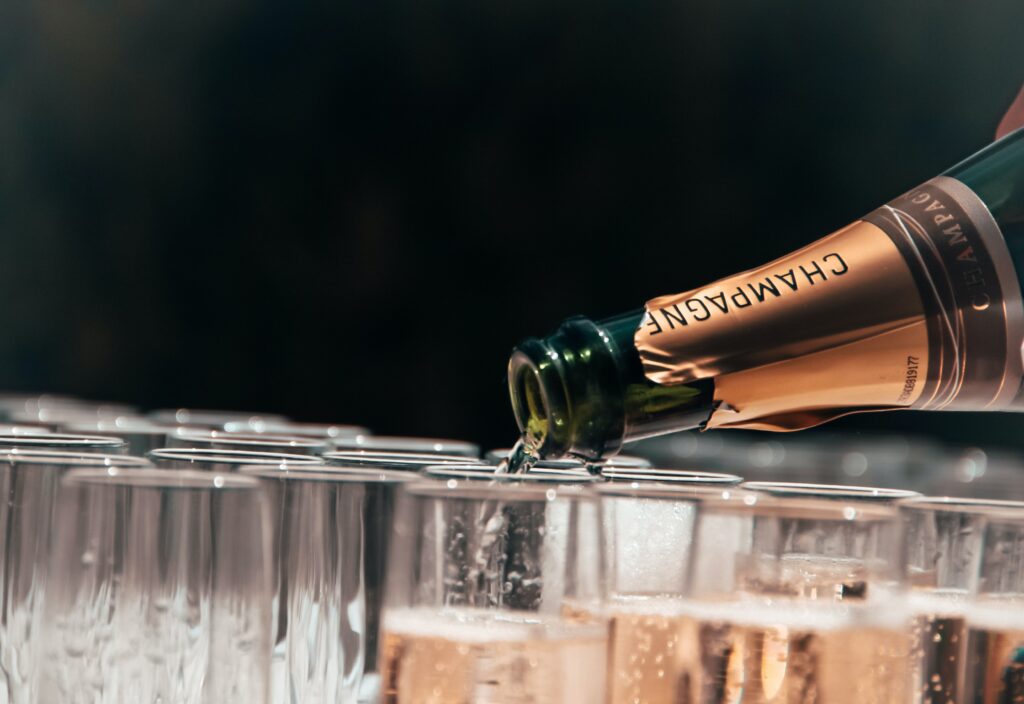
Discover our entire stock in our Sales Portal
Although we focus on spirits more, we regularly offer champagnes as well. So, if you are looking for champagnes for your liquor store, whether it is for Lanson, Dom Perignon, Moet & Chandon or Pommery, you can easily discover all of our stock in our Sales Portal. Here you can view our real-time stock 24/7.
In addition to champagnes, we also offer other wines, but especially many spirits. We always have more than 2,000 brands in stock. Let us surprise you with our wide assortment and create an account right away!
Note: Moving Spirits is a champagne wholesaler that only delivers to business customers.

